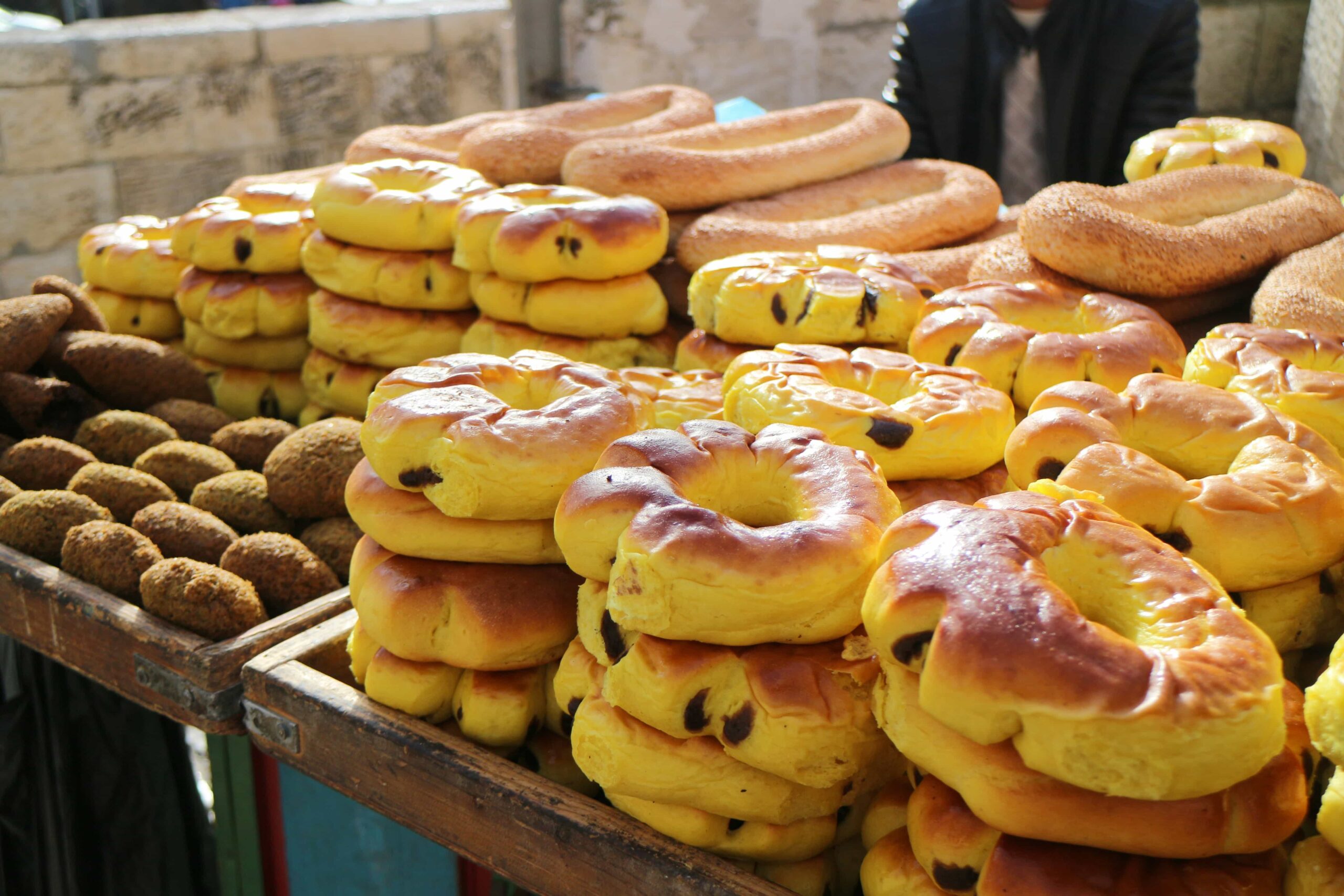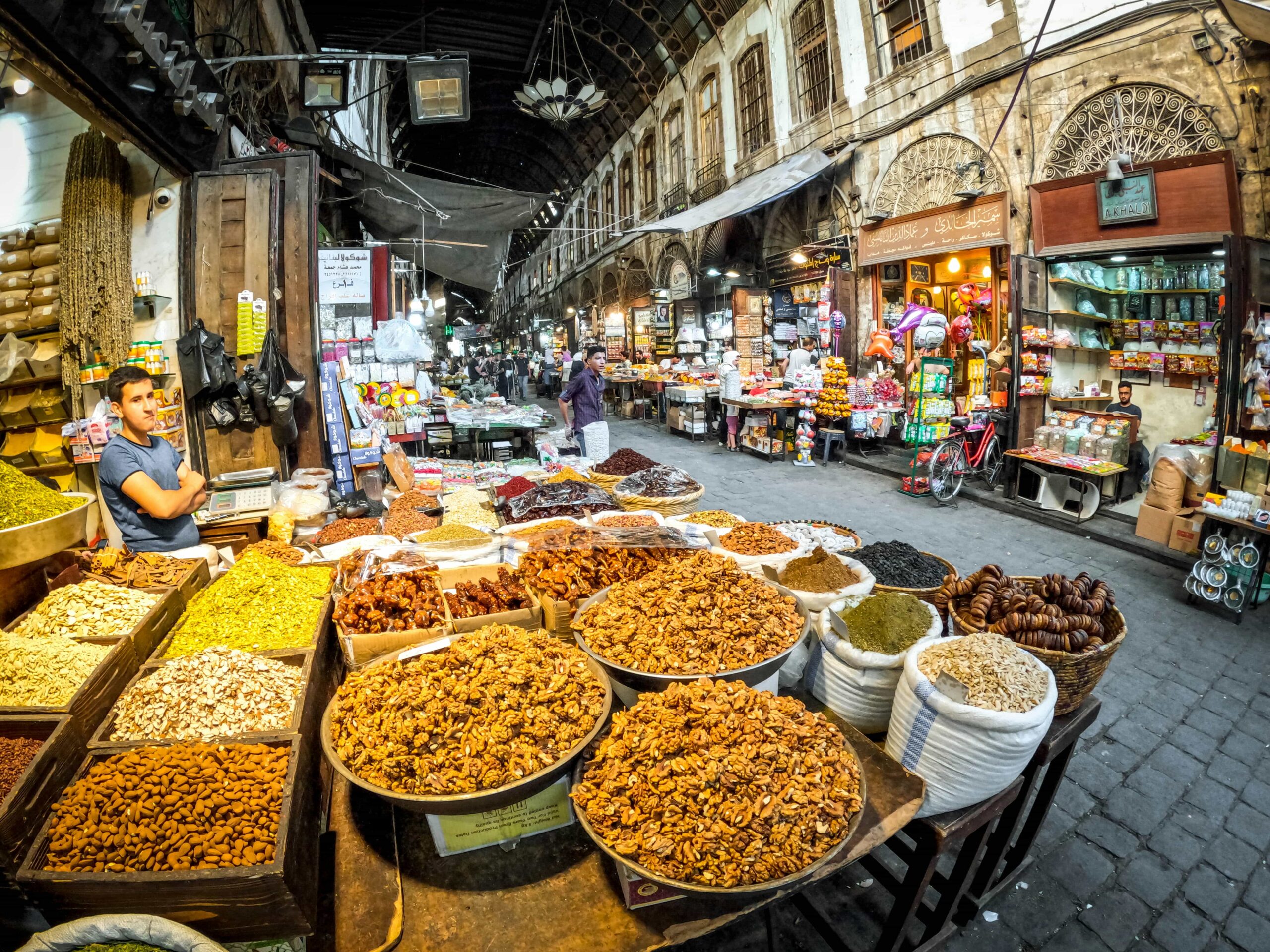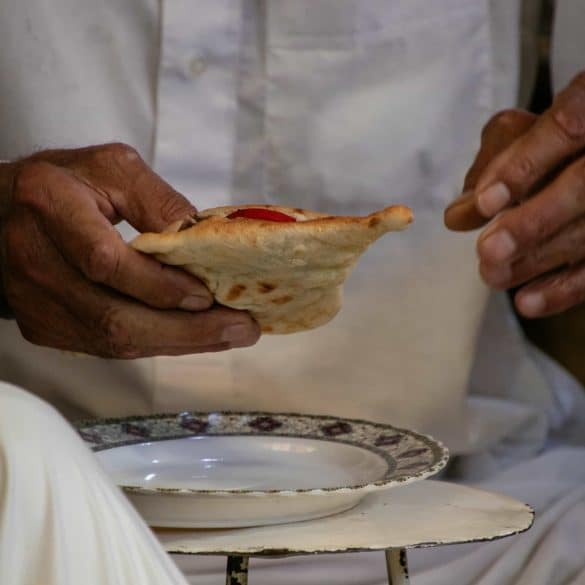Syrian Shawarma: The Ultimate Authentic Guide to This Iconic Dish
Walking through the ancient streets of Damascus in 2019, I was completely mesmerized by the rhythmic sound of knife against meat as vendors skillfully carved layers of perfectly roasted lamb from towering spits. The aroma—oh, that incredible aroma of cumin, cardamom, and charred meat mingling with fresh garlic and tahini—it’s something that stays with you forever. That’s when I truly understood that Syrian shawarma isn’t just fast food; it’s a cultural masterpiece that’s been perfected over centuries.
Having spent the better part of my culinary career studying Middle Eastern cuisine, I’ve discovered that authentic Syrian shawarma represents far more than a quick meal. It’s a testament to Syria’s rich culinary heritage, a symbol of community gathering, and honestly, one of the most misunderstood foods in Western culture. What most people think they know about shawarma? Well, let me tell you—it’s probably quite different from the real deal.
The Rich History and Cultural Origins
The origins of shawarma trace back to the Ottoman Empire, but Syria—particularly Damascus and Aleppo—truly perfected this culinary art form. According to historical food researchers1, the vertical rotisserie method was developed in the 19th century, revolutionizing how meat was prepared for large gatherings and busy markets.
Syria: Cradle of Culinary Innovation
Syria’s strategic location along ancient trade routes made it a melting pot of culinary traditions. The country’s diverse geography—from Mediterranean coastlines to desert regions—contributed to the rich variety of ingredients and cooking methods that make Syrian shawarma so distinctive. Today, Syrian cuisine is recognized by UNESCO as an Intangible Cultural Heritage.
What fascinates me most about Syrian shawarma’s history is how it evolved from royal Ottoman kitchens to become the ultimate street food. The technique requires incredible skill—I’ve watched master shawarma chefs in Aleppo who’ve been perfecting their craft for over 40 years, and their precision is absolutely mesmerizing. Each slice must be exactly the right thickness, the meat perfectly seasoned, and the timing… well, that’s where the real artistry comes in.
The Syrian approach to shawarma differs significantly from other Middle Eastern variations. While Turkish döner kebab and Greek gyros share similar cooking methods, Syrian shawarma incorporates unique spice blends that reflect the country’s position as a crossroads of civilizations. The influence of Persian, Turkish, and Arab culinary traditions creates a flavor profile that’s both complex and deeply satisfying.
Traditional Preparation Methods and Techniques
The traditional Syrian shawarma preparation process is honestly an art form that takes years to master. I remember my first attempt at home—what a disaster! But watching authentic preparation in Damascus taught me that patience and technique are everything. The meat, typically lamb or a combination of lamb and beef, is marinated for at least 24 hours using a complex blend of spices that varies by region and family tradition.
Essential Traditional Techniques
The key to authentic Syrian shawarma lies in the vertical rotisserie method, where meat is stacked in carefully planned layers, with fattier cuts placed strategically to baste the leaner meat as it cooks. This technique, called “turning the spit,” requires constant attention and skill to ensure even cooking.
The spice blend—or “baharat” as it’s known in Arabic—is where Syrian shawarma truly shines. After consulting with several Syrian chefs2, I’ve learned that the traditional blend typically includes:
- Cumin (the dominant flavor that gives Syrian shawarma its distinctive taste)
- Cardamom (adds warmth and complexity)
- Cinnamon (subtle sweetness that balances the savory elements)
- Allspice (provides depth and aromatic qualities)
- Black pepper (essential for heat)
- Sumac (adds tangy brightness, particularly popular in northern Syria)
The marinade process is where family secrets come into play. Most Syrian families guard their spice ratios carefully, passing them down through generations. During my research, I discovered that Damascus-style shawarma tends to be more heavily spiced than Aleppo-style, which relies more on the quality of the meat and subtle seasoning.
Regional Variations Across Syria
Syria’s diverse regions each contribute their own unique twist to shawarma preparation. Having had the privilege of trying authentic shawarma in different Syrian cities, I can tell you the variations are remarkable—and honestly, each region believes theirs is the best!
| Region | Meat Preference | Distinctive Spicing | Serving Style |
|---|---|---|---|
| Damascus | Lamb dominant | Heavy baharat, garlic | Pita bread, pickles |
| Aleppo | Beef and lamb mix | Subtle, cinnamon-forward | Lavash, yogurt sauce |
| Latakia | Chicken popular | Mediterranean herbs | With vegetables |
| Homs | Mixed meats | Paprika, moderate spice | Traditional pita |
What really struck me during my travels was how the cooking time varies significantly between regions. Aleppo-style shawarma is typically cooked longer at lower temperatures, resulting in incredibly tender meat with a more subtle flavor profile. Damascus-style, on the other hand, uses higher heat for shorter periods, creating more caramelization and a more intense flavor.
Essential Ingredients and Spice Blends
The quality of ingredients makes or breaks authentic Syrian shawarma. This isn’t about convenience—it’s about respecting centuries of culinary tradition. The meat selection alone requires careful consideration. Traditional Syrian shawarma uses specific cuts of lamb and beef, chosen for their fat content and texture when cooked on the vertical spit.
According to traditional Syrian culinary texts3, the ideal meat ratio is 70% lean cuts to 30% fattier portions. This balance ensures the meat stays moist during the long cooking process while developing the characteristic crispy exterior that makes Syrian shawarma so distinctive.

Health Benefits and Nutritional Profile
Now, I know what you’re thinking—how healthy can street food really be? Well, let me tell you, authentic Syrian shawarma might surprise you. When prepared traditionally, it’s actually quite nutritious. The combination of lean meats, fresh vegetables, and whole grain bread provides a balanced meal that’s rich in protein, vitamins, and essential minerals.
Recent nutritional studies4 show that a typical serving of traditional Syrian shawarma contains approximately 25-30 grams of high-quality protein, significant amounts of iron, zinc, and B vitamins. The fermented pickles that accompany the dish add probiotics, while the fresh vegetables provide fiber and vitamins.
| Nutrient | Amount per Serving | % Daily Value | Health Benefits |
|---|---|---|---|
| Protein | 28g | 56% | Muscle maintenance |
| Iron | 4.2mg | 23% | Blood health |
| Zinc | 3.8mg | 35% | Immune function |
| B12 | 2.1mcg | 88% | Nervous system |
Spice Health Benefits
The traditional spice blend in Syrian shawarma isn’t just about flavor—many of these spices have documented health benefits. Cumin aids digestion, cardamom has anti-inflammatory properties, and cinnamon helps regulate blood sugar. It’s fascinating how traditional cuisine often incorporates ingredients that support health naturally.
The fermentation process used in traditional Syrian pickles—particularly the turnip pickles that are absolutely essential to authentic shawarma—provides beneficial probiotics that support digestive health. I’ve noticed that when I eat authentic Syrian shawarma, I feel satisfied longer than with other fast food options, probably due to the protein content and the complex spice blend.
Modern Adaptations and Dietary Considerations
Here’s where things get interesting—and honestly, a bit controversial among traditionalists. Modern dietary needs and preferences have led to creative adaptations of Syrian shawarma, and while purists might cringe, I think some of these variations are actually quite brilliant.
For vegetarian and vegan adaptations, innovative chefs have experimented with layered mushroom preparations, seasoned jackfruit, and even compressed tofu that’s marinated in traditional spice blends. While these obviously can’t replicate the exact taste of traditional meat-based shawarma, they capture the essence of the spice profile remarkably well.
- Keto-friendly options using lettuce wraps instead of bread
- Gluten-free versions with chickpea flour flatbreads
- Low-sodium preparations for those with dietary restrictions
- Halal and kosher certified versions maintaining traditional flavors
The key to successful modern adaptations lies in understanding the fundamental flavor principles. Recent culinary research5 suggests that the umami compounds in traditionally prepared shawarma can be replicated through careful ingredient selection and preparation techniques, even in plant-based versions.
I’ve personally tried several modern adaptations, and while nothing quite matches the traditional experience, some come remarkably close. The cauliflower shawarma I had at a Syrian restaurant in Toronto was absolutely delicious—the chef had managed to create layers of flavor that honored the original while accommodating different dietary needs.
Accessibility and Availability
Finding authentic Syrian shawarma outside of Syria can be challenging, but it’s not impossible. Syrian refugee communities have established restaurants worldwide, bringing authentic techniques and flavors to new locations. In my experience, the most authentic versions are often found in areas with significant Syrian populations.
For those interested in experiencing authentic Syrian shawarma, I’d recommend seeking out family-run establishments rather than chain restaurants. The difference in quality and authenticity is remarkable. Many Syrian families have brought their traditional recipes and techniques with them, maintaining the authentic preparation methods that make this dish so special.
When evaluating authenticity, look for restaurants that prepare their own spice blends, use vertical rotisseries, and serve traditional accompaniments like pickled turnips and tahini-based sauces. The bread should be fresh and warm, and the meat should be carved to order rather than pre-sliced.
Making Authentic Shawarma at Home
Now, I’ll be completely honest with you—making authentic Syrian shawarma at home is challenging without professional equipment. But here’s the thing: with some creativity and patience, you can create something pretty remarkable that captures the essence of this incredible dish.
The biggest hurdle is obviously the vertical rotisserie. Most home cooks don’t have access to this equipment, but I’ve experimented with several alternative methods. The oven-roasting technique, while different from traditional preparation, can produce surprisingly good results when done properly.
Home Cooking Essential Steps
- Prepare the spice blend 24 hours in advance to allow flavors to meld
- Marinate the meat for at least 12 hours, preferably overnight
- Layer the meat properly to mimic the traditional stacking method
- Cook at high heat initially, then reduce to ensure even cooking
- Rest the meat before slicing to maintain juiciness
The spice blend is where you can really achieve authenticity at home. I’ve perfected a recipe through extensive experimentation and consultations with Syrian chefs6. The key is toasting whole spices before grinding—this intensifies the flavors significantly.
For the meat preparation, I recommend using a combination of lamb shoulder and beef chuck, cut into thin slices and layered with fat strips. This mimics the traditional stacking method and ensures the meat stays moist during cooking. The marinade should be rubbed between each layer, not just on the surface.
Cultural Significance and Social Aspects
Syrian shawarma represents far more than just a meal—it’s a cultural institution that brings people together. In Syrian society, sharing shawarma is a social activity that transcends economic and social boundaries. Whether you’re a laborer grabbing a quick lunch or a family celebrating a special occasion, shawarma is the great equalizer.
During my time in Syria, I observed how shawarma vendors serve as community hubs. People gather around the spit, discussing daily events, sharing news, and maintaining social connections. The vendor often knows their customers by name and their preferred preparation style. This personal touch is something that’s often lost in modern food service.
The preparation of shawarma also represents intergenerational knowledge transfer. Young apprentices learn by watching master chefs, gradually developing the skills needed to maintain quality and authenticity. This mentorship system ensures that traditional techniques are preserved and passed down through generations.
For Syrian diaspora communities, shawarma serves as a connection to home and cultural identity. Opening a shawarma restaurant becomes a way to share their heritage while supporting their new communities. I’ve spoken with several Syrian restaurant owners who describe their establishments as cultural bridges, introducing their new neighbors to authentic Syrian flavors and traditions.
The future of Syrian shawarma depends on maintaining authenticity while adapting to modern contexts. As Syrian communities establish themselves globally, they’re finding ways to preserve traditional techniques while accommodating local tastes and dietary preferences. This evolution ensures that shawarma remains relevant and accessible to new generations.
What truly amazes me about Syrian shawarma is its ability to bring people together across cultural boundaries. Food has this incredible power to create understanding and connection, and shawarma exemplifies this perfectly. When you enjoy authentic Syrian shawarma, you’re not just eating a meal—you’re participating in a cultural tradition that spans centuries.
As we conclude this comprehensive exploration of Syrian shawarma, I hope you’ve gained a deeper appreciation for the skill, tradition, and cultural significance behind this remarkable dish. Whether you seek out authentic shawarma at a Syrian restaurant or attempt to recreate it at home, remember that you’re engaging with a living piece of Syrian heritage that continues to evolve and adapt while maintaining its essential character.
References



